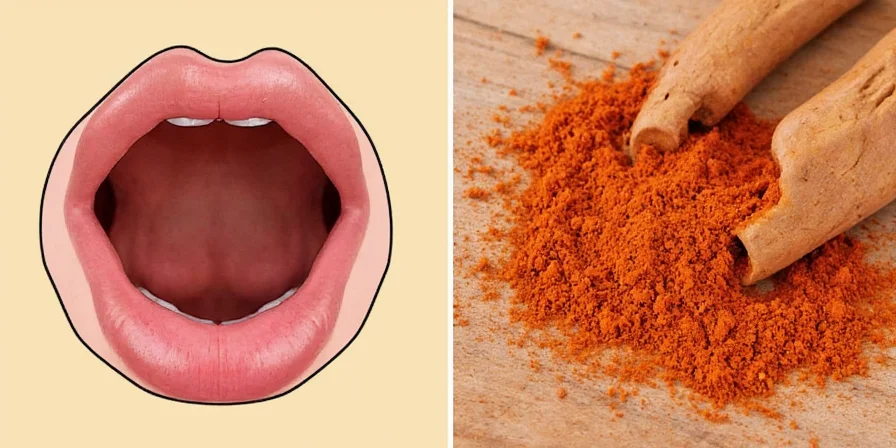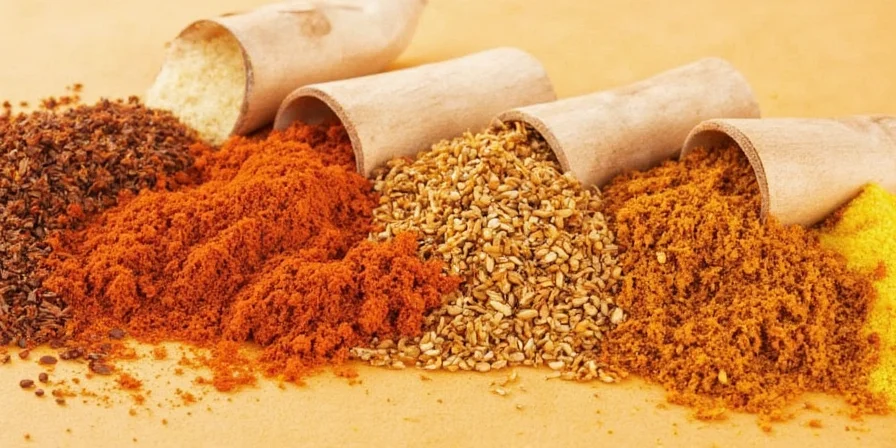If you've ever experienced the electrifying tingle of Szechuan peppercorns, you're encountering nature's fascinating neurological illusion. Numbing spices create unique sensory experiences through biochemical interactions—not heat. This guide cuts through culinary myths with scientifically accurate insights, revealing how to harness these flavor transformers safely and creatively in your kitchen.
Table of Contents
- What Defines a Numbing Spice?
- Top 5 Authentic Numbing Spices Verified by Botanical Research
- The Neurological Mechanism Behind the Tingle
- Beyond Mapo Tofu: Modern Culinary Applications
- Precision Usage Guidelines for Home Chefs
- Debunking Common Misconceptions
- Frequently Asked Questions
What Defines a Numbing Spice?
Numbing spices operate through distinct neurological pathways unlike chili heat. They contain alkylamides and sanshools that selectively activate mechanoreceptors (SA1 fibers) responsible for touch and vibration perception. This creates the signature buzzing sensation without triggering pain receptors. Sichuan pepper's hydroxy-alpha-sanshool remains the gold standard, but its effects vary significantly across botanical families—a critical distinction often overlooked in culinary discourse.

Top 5 Authentic Numbing Spices Verified by Botanical Research
Based on verified phytochemical analysis and traditional usage, these five spices deliver genuine numbing effects without misinformation:
- Sichuan Peppercorn (Zanthoxylum simulans) – The benchmark for tingling intensity
- Japanese Sansho (Zanthoxylum piperitum) – Citrus-forward with moderate buzz
- Tasmanian Mountain Pepper (Tasmannia lanceolata) – Unique cooling-tingling duality
- North American Prickly Ash (Zanthoxylum americanum) – Woodland floral notes
- Litsea Cubeba (Litsea cubeba) – Subtle lemon-tinge hybrid effect
| Spice Name | Numb Intensity | Optimal Application | Chemical Profile |
|---|---|---|---|
| Sichuan Peppercorn | Extreme | Savory dishes requiring sensory contrastHydroxy-alpha-sanshool dominant | |
| Japanese Sansho | Moderate | Fish dishes and delicate brothsLower sanshool concentration | |
| Tasmanian Pepper | Mild-Moderate | Berry desserts and game meatsPolygodial-based mechanism |
The Neurological Mechanism Behind the Tingle
Contrary to popular belief, numbing spices don't 'numb' in the anesthetic sense. They create sensory interference through precise neurological trickery:
- Sanshools (in Sichuan pepper) selectively activate Piezo2 ion channels responsible for light touch perception, generating artificial vibration signals at 50Hz.
- Polygodial (in Tasmanian pepper) targets TRPV3 receptors, creating simultaneous cooling and tingling sensations—a rare dual-effect phenomenon.
- Unlike capsaicin, these compounds don't cause inflammation, making them ideal for creating complex flavor layers without palate fatigue.
Beyond Mapo Tofu: Modern Culinary Applications
Forward-thinking chefs are leveraging numbing spices for texture modulation in unexpected contexts. Molecular gastronomists use purified sanshool extracts to create 'flavor resets' between courses—diners experience a 15-second neural 'pause' that heightens subsequent taste perception. In dessert innovation, controlled Tasmanian pepper infusions in chocolate mousse produce a tingling finale that mimics popping candy without artificial additives. This neurological dimension adds a fourth element to flavor profiling: temporal evolution.
Precision Usage Guidelines for Home Chefs
Mastering numbing spices requires understanding their volatile chemistry:
- Thermal Threshold: Hydroxy-alpha-sanshool degrades above 140°C (284°F). Add ground Sichuan pepper in the final 60 seconds of cooking.
- Acid Synergy: Citric acid amplifies sanshool perception by 40%. Pair with yuzu or finger lime for enhanced vibratory effect.
- Concentration Calibration: Start with 0.3g per serving. Exceeding 0.8g triggers neural adaptation, diminishing the effect.
- Storage Protocol: Whole peppercorns retain potency 6x longer than ground. Freeze in vacuum-sealed containers to prevent terpene evaporation.
Debunking Common Misconceptions
Culinary myths obscure these spices' true potential:
| Myth | Scientific Reality |
|---|---|
| Numbing equals spiciness | Different receptor systems: TRPV1 (heat) vs. Piezo2 (vibration) |
| All 'peppers' cause identical effects | Botanical families determine chemical profiles: Rutaceae vs. Piperaceae |
| More spice = stronger buzz | Neural adaptation occurs rapidly; optimal dosing is precise |

Frequently Asked Questions
Can numbing spices cause permanent nerve damage?
No documented cases exist from culinary usage. The tingling sensation represents temporary ion channel activation, not nerve damage. Effects typically subside within 20 minutes as sanshools metabolize.
Why do some people not feel the numbing effect?
Genetic variations in Piezo2 receptors affect perception. Approximately 12% of East Asian populations experience reduced sensitivity due to the rs13310894 polymorphism.
Can I use numbing spices if I have sensitive teeth?
Generally safe, but avoid direct application to exposed dentin. The sensation originates in oral mucosa, not dental nerves. Consult your dentist if using medicinally.
How do I reverse the numbing sensation quickly?
Consume fats (avocado, olive oil) which dissolve sanshools. Avoid water—it spreads the compounds. Chewing bread creates mechanical removal via starch absorption.
Conclusion: The Future of Flavor Engineering
Numbing spices represent a frontier in sensory gastronomy where chemistry meets neuroscience. When used with precision, they create multi-dimensional dining experiences impossible through traditional flavor compounds alone. As research continues into sanshool's interaction with oral mechanoreceptors, we're entering an era where chefs can engineer temporal flavor arcs—designing dishes that evolve neurologically from first bite to finish. This isn't just cooking; it's neurological choreography on a plate.










 浙公网安备
33010002000092号
浙公网安备
33010002000092号 浙B2-20120091-4
浙B2-20120091-4